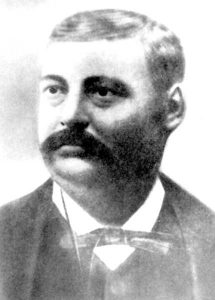One of the most outstanding members of the Longhorse Police in Indian Territory, Sam Sixkiller, was born in the Going Snake District (now Adair County) of the Cherokee Nation in 1842. At the age of 19, he joined a Union Indian artillery company commanded by his father, 1st Lt. Redbird Sixkiller, during the Civil War. In 1875, Sixkiller was appointed high sheriff of the Cherokee Nation and warden of the National Penitentiary.
Five years later, in February 1880, Sixkiller became the first captain of the United States Indian Police headquartered at Muskogee, Indian Territory. He also held a U.S. Deputy Marshal’s commission that allowed him to pursue these outlaws out of Indian Territory into Texas, Kansas, Missouri, and Arkansas, as well as being a special agent for the Missouri-Pacific Railroad, which gave him access to any railroad property in pursuit of any bandit. With 40 men under his command, tasked with policing Muskogee, one of the most dangerous towns in the Wild West, Sixkiller and his men dealt with bootleggers, cattle rustlers, murderers, train robbers, and all manner of lawless characters.
During his six years as captain, Sixkiller’s most famous event was when he attempted to arrest Dick Glass, a notorious outlaw who led a gang of horse rustlers and bootleggers. In June 1885, Sixkiller and his posse set up an ambush for Glass and his gang near Colbert in the Chickasaw Nation. When the outlaws arrived, the six-shooters began to go off, and in the melee, Sixkiller shot Glass. The rest of the gang was either killed or arrested shortly after that.
On December 24, 1886, Captain Sixkiller was murdered in Muskogee by two men named Dick Vann and Alf Cunningham. Supposedly holding a grudge against the lawman for a prior run-in, the pair fired on Sixkiller without notice before escaping.
© Kathy Alexander/Legends of America, updated November 2022.
Also See:

